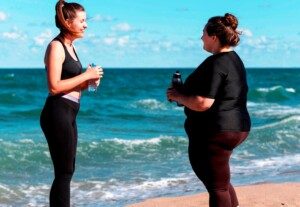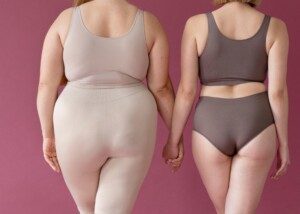A fat body is more unattainable than a thin body. A fat body is more unrealistic to achieve than a thin body.
The prevailing notion is that achieving a thin physique is an arduous task, often portrayed as an impossible feat.
However, delving into the dynamics of weight gain and loss reveals an intriguing paradox: Intentionally putting on a significant amount of weight, particularly reaching the realm of morbid obesity, may be more elusive than shedding pounds to attain a slender figure.
Consider a person of “medium” or slim weight with a normal appetite and discomfort with overeating.
Attempting to consume the colossal amount of calories necessary to gain a hundred pounds and reach morbid obesity becomes a formidable challenge.
The discomfort of stuffing oneself, coupled with the physical impossibility of sustaining such a routine on a daily basis, renders this endeavor exceedingly difficult to sustain.
In essence, the journey to a morbidly obese body seems insurmountable for those predisposed to maintain a normal appetite and weight.
Morbid obesity is defined as being at least 100 pounds heavier than the recommended weight for one’s height and gender.
To illustrate the dichotomy, envision a woman of medium size aiming to transform her body.
To achieve a notably thin body, she might need to shed 30 pounds, bringing her weight down from 145 to 115 at a height of 5’7.
In comparison, the alternative would be attempting to gain a staggering 100 pounds to reach morbid obesity: 245 pounds on her frame.
The juxtaposition reveals a stark reality: It’s far more challenging for an individual to embark on the journey of overconsumption, facing the discomfort of stuffing oneself daily, than to adopt healthier eating habits and engage in physical activity to shed excess weight.
The narrative around the unattainability of thin bodies should be reconsidered in light of this paradox.
“A thin body is impossible to attain.”
The prevalent discourse on social media, blogs and articles often perpetuates the belief that achieving thinness is an impossible endeavor.
However, if any body type can be deemed genuinely unattainable, it’s a fat one, especially when pushing the boundaries of morbid obesity (e.g., 5’4 and 230+ pounds).

Freepik.com
The physical and psychological challenges of intentionally gaining and maintaining such excessive weight are rarely acknowledged in the prevalent narratives surrounding body image.
Planet Akreesia: Fat Is the Norm
Imagine a hypothetical world where morbid obesity is hailed as the epitome of health and longevity, while thinness is associated with a myriad of life-threatening conditions, including heart disease, stroke, cancer, type 2 diabetes and liver dysfunction.
On Planet Akreesia, all of this has been proven by mountains of research. So it’s not just a beauty standard to be morbidly obese; it’s an issue of optimal health, fitness and great mobility.
Imagine the 30% of thin people on Akreesia attempting to gain a whopping hundred pounds and keep it on to attain a beauty standard as well as get much healthier on this pink-sky planet 55 light-years from Earth.
What percentage of thin Akreesians do you honestly believe would succeed?
Assume that there’s plenty of food available — plenty of highly caloric, sugary and delicious foods.
To blow up to morbid obesity, the thin population must switch from 2,000 calories a day to 6,000 calories a day.
In our reality here on Earth, an intentional 100 pound weight gain for many slim people would come with heartburn, acid reflux, bloating, stomach pain, frequent burping and farting, perhaps a lot of diarrhea, and even barfing up the three chili cheeseburgers that one just forced down.

©Lorra Garrick
Fact is, it’s way easier to go from 6,000 calories a day to 2,000 calories a day.
Some Re-Evaluation Is in Order
The rhetoric surrounding “bodies that are impossible to attain” should be re-evaluated.
While claims about the impossibility of achieving thin bodies abound, the practical hardships of intentionally gaining excessive weight and maintaining it are often overlooked.
Personally, the prospect of consuming enough calories to reach 250 and especially 300 pounds on an average-height woman is inconceivable and unrealistic for nearly all.
In contrast, the goal of losing 30 pounds to attain a thin build through mindful eating and increased physical activity appears far more achievable and sustainable in the long-term.
Stop the Rhetoric Already
In conclusion, the discourse on body attainability should shift away from perpetuating myths about the impossibility of achieving thin bodies.
Recognizing the paradoxical nature of intentional weight gain vs. weight loss sheds light on the inherent challenges each journey presents.
Let’s abandon the notion that thinness is an unattainable ideal and acknowledge the complex dynamics surrounding body transformations.
 Lorra Garrick is a former personal trainer certified by the American Council on Exercise. At Bally Total Fitness, where she was also a group fitness instructor, she trained clients of all ages for fat loss, muscle building, fitness and improved health.
Lorra Garrick is a former personal trainer certified by the American Council on Exercise. At Bally Total Fitness, where she was also a group fitness instructor, she trained clients of all ages for fat loss, muscle building, fitness and improved health.
.










































